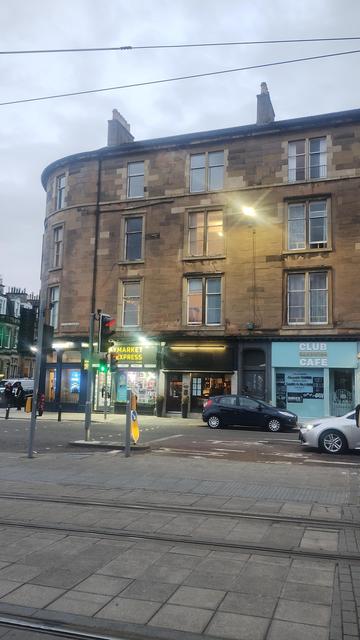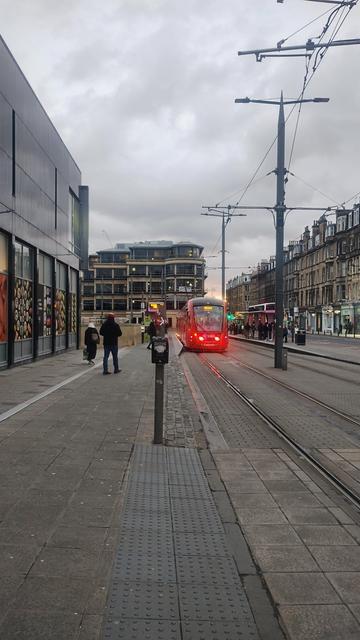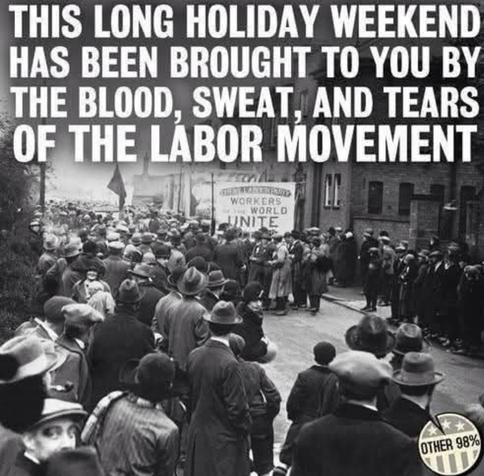#Haymarket
Colourful decorations on what was, for many years, Diane's Pool Hall at Haymarket, now an Irish theme pub
#Edinburgh #Edimbourg #EdinburghByNight #NightPhotography #photography #photographie #pub #bar #Haymarket #UrbanNight #Ecosse #Scotland #architecture
Today in Labor History October 28, 1902: Anarchist feminist Kate Austin died from tuberculosis. She was influenced by the Free Love Anarchism of Moses Harmen (publisher of the journal Lucifer), and particularly by the Haymarket affair. She was a member of the American Press Writers' Association, and wrote for many working-class and radical newspapers, including The Firebrand, Free Society, Discontent, and The Demonstrator.
#workingclass #LaborHistory #anarchism #kateaustin #feminism #freelove #haymarket
All the ebooks from #Haymarket are for sale, 2$ per book, valid until November 7. I have bought some epubs to them in the past, they are good old epubs without DRM.
The catalog of this anarchist-leaning library is very interesting, lots of books on class struggle and all other social struggles. Time to go shopping !
https://www.haymarketbooks.org/blogs/230-haymarket-ebooks-on-sale-for-2
Today in Labor History October 23, 1903: The Anarchist Exclusion Act was first tested in the U.S. with the arrest of John Turner who was detained on Ellis Island until his deportation. Turner edited the “Voice of Labor,” which advocated for direct action and the General Strike. His arrest and expulsion were based on writings by anarchist Johann Most and a memorial to the Haymarket martyrs that were found when police searched his apartment.
#workingclass #LaborHistory #anarchism #johnturner #haymarket #directaction #GeneralStrike
WATCH: 1981 film of Tyne and Wear Metro discovered on eBay http://dlvr.it/TNrMWB #Gosforth #Haymarket #Jesmond #Network
Jeder von uns ist ein unvollkommener Genosse oder: Eine Armee von Verlierern kann nicht verlieren
1887, nach einem der dramatischsten und ungerechtesten #Prozesse in der Geschichte der USA, stieg ein deutscher #Einwanderer und Spielzeugmacher namens George #Engel in #Chicago auf das Schafott. Seine Hinrichtung war alles andere als öffentlich – das #Gefängnis war mit Maschinengewehren umzingelt, für den Fall, dass #Anarchisten oder ihre Verbündeten beschließen sollten, den Ort zu stürmen, um ihre gemarterten Genossen zu befreien.
Drei weitere Männer waren mit ihm dort. Einer war sein Freund Adolph #Fischer. Ein weiterer, Albert #Parsons, sprach Englisch statt Deutsch. Der andere Mann war jedoch August #Spies (ausgesprochen „Speez“, wie ich gehört habe).
Dieser verdammte Kerl.
Engel hasste Spies. Sie hatten seit über einem Jahr nicht mehr miteinander gesprochen. Sehen Sie, damals gab es in Chicago mehr als eine deutschsprachige anarchistische Zeitung. Engel und Fischer arbeiteten für „Der Anarchist“, die radikale Zeitung, die sich dafür einsetzte, dass Einzelpersonen und kleine Gruppen direkte Aktionen gegen den #Kapitalismus durchführen sollten. Spies arbeitete für die gemäßigte Zeitung „Arbeiter-Zeitung“, die sich für den Aufbau einer #Massenbewegung einsetzte, mit der die kapitalistische Ordnung gestürzt werden sollte.
Für den Staat spielten ihre Differenzen keine Rolle, er legte ihnen allen die Schlinge um den Hals. So starben die Männer, die wir als die #Haymarket-Märtyrer kennen und aus deren Andenken ein Großteil der modernen #Arbeiterbewegung hervorgegangen ist.
Keiner von uns in unseren Bewegungen, die für eine bessere Welt kämpfen, ist ein perfekter Mensch.
Albert Parsons ist vielleicht der berühmteste der Haymarket-Märtyrer, vielleicht (und zu Unrecht) weil er derjenige war, der in den Vereinigten Staaten geboren wurde. Vielleicht auch, weil er mit einer der berühmtesten #Gewerkschaftsorganisatorinnen der Geschichte verheiratet war, der unsterblichen #Lucy Parsons, die jahrzehntelang öffentlich und lautstark an ihn erinnerte, während sie Arbeiter zum Handeln aufrief.
Ihre Ehe war illegal – Albert war weiß, Lucy schwarz.
Albert Parsons ist durch seine Arbeit und sein Martyrium eine der wichtigsten Figuren nicht nur in der Geschichte des #Anarchismus, sondern auch in der Geschichte der #Arbeiterbewegung. Er verbrachte auch Jahre seines Lebens als Soldat der #Konföderierten, was oft vergessen wird. Er wurde nicht eingezogen, sondern meldete sich freiwillig. Tatsächlich log er bei seiner Anmeldung, was sein Alter anging, denn er war noch ein Kind, als er loszog, um für eines der schlimmsten Systeme zu kämpfen, die die Welt je gesehen hat.
Ich sage das nicht, um den Mann oder sein Andenken zu verunglimpfen, sondern um zu sagen: Keiner von uns ist ein Engel.
Wenn es in der Geschichte einen klareren Weg der Erlösung für einen ehemaligen Konföderierten gibt, habe ich ihn nicht gefunden. Er war buchstäblich ein Kind, als er in den #Krieg zog, und vielleicht ist das einzige entscheidende Merkmal, das Kindheit von Erwachsensein unterscheidet, dass wir Kinder für ihre Handlungen nicht moralisch verantwortlich machen.
Nach dem Krieg widmete Albert Parsons sein Leben dem Kampf gegen alles, wofür die #Konföderation stand, und wurde regelmäßig angegriffen (unter anderem wurde er einmal angeschossen), weil er sich für die Registrierung schwarzer Wähler in #Texas einsetzte. Nachdem er und Lucy nach Chicago gezogen waren (wo ihre Ehe trotz der Zugehörigkeit zum Norden rechtlich nicht anerkannt wurde), hatten sie genug von der Sinnlosigkeit reformistischer Politik, genug davon, mit anzusehen, wie ihre Genossen von rechten #Milizen und der #Polizei erschossen wurden, und begannen, sich mit den überwiegend aus Einwanderern bestehenden anarchistischen #Sozialisten zu organisieren.
Als dann 1886 jemand bei einer Arbeiterkundgebung eine #Bombe auf die Polizei warf (zwei Tage nachdem die Polizei bei einer anderen Kundgebung das Feuer eröffnet und mehrere Menschen getötet hatte), setzte die Polizei die #Rechtsstaatlichkeit außer Kraft, um alle Anarchisten in der Stadt zu verhaften. Die #Repression richtete sich vor allem gegen die Herausgeber der Zeitungen, so dass Albert untertauchte und sich bei einem gemäßigteren sozialistischen Freund auf einer Farm in einiger Entfernung versteckte.
Als Albert jedoch erkannte, dass den Anarchisten, insbesondere den ihm bekannten #Zeitungsredakteuren mit Migrationshintergrund, die Todesstrafe drohte, stellte er sich, um sich solidarisch mit ihnen vor #Gericht zu verantworten.
Wahrscheinlich tat er dies, weil er glaubte, dass sie vor Gericht gewinnen würden, da er noch immer Illusionen über die #Gerechtigkeit des #Rechtssystems hegte. Es gab keine Beweise dafür, dass einer von ihnen die Bombe geworfen hatte. Keiner von ihnen wurde überhaupt beschuldigt, die Bombe geworfen zu haben. Sie wurden wegen der Herausgabe von Zeitungen vor Gericht gestellt und gehängt.
Wenn ich ehrlich bin, hätte ich Albert Parsons wahrscheinlich nicht gemocht. Alles, was ich über ihn oder von ihm gelesen habe, lässt mich glauben, dass er ein übereifriger Aktivist war, der sich selbst in den Mittelpunkt stellte und bei Versammlungen nie den Mund hielt.
Wir müssen uns nicht mögen, um solidarisch zu sein, denn der Staat hat kein Problem damit, uns Seite an Seite am #Galgen stehen zu lassen.
(...)
Weiterlesen in meiner Übersetzung des Textes Each of Us Imperfect Comrades or: An Army of Fuckups Cannot Lose, von Margaret Killjoy vom 15. Oktober 2025
Today in Labor History October 14, 1883: The two-day founding congress of the International Working People's Association (IWPA) occurred in Pittsburgh, Pennsylvania, at the Allegheny Turner Hall, marking the beginning of the anarchist-trade union movement in the US. Participants wore red badges and carried red flags. The congress endorsed militant labor organizing, overthrowing the state, and "propaganda by the deed," which included assassinations. Parsons, Spies, Johann Most, and others drafted the Pittsburgh Manifesto at this event. The manifesto called for the overthrow of the ruling class and replacing it with free cooperatives. The manifesto ends with the following line: “Tremble, oppressors of the world! Not far beyond your purblind sight there dawns the scarlet and sable lights of the JUDGEMENT DAY!”
Here are the basic principles called for in the manifesto:
1. Destruction of the existing class rule, by all means, i.e., by energetic, relentless, revolutionary, and international action.
2. Establishment of a free society based upon co-operative organization of production.
3. Free exchange of equivalent products by and between the productive organizations without commerce and profit-mongering.
4. Organization of education on a secular, scientific, and equal basis for both sexes.
5. Equal rights for all without distinction to sex or race.
6. Regulation of all public affairs by free contracts between the autonomous (independent) communes and associations, resting on a federalistic basis.
Preceding the IWPA was the Workingmen’s Party (WPUS), formed in Philadelphia in 1876, which played a major role in the Great Upheaval of 1877, particularly in St. Louis and Chicago. During that strike wave, over 100 workers were slaughtered by cops, Pinkertons and federal troops. Albert and Lucy Parsons were important organizers during that strike. However, the WPUS became dominated by Lasallian socialists, who opposed strikes and direct action, and believed they could vote capitalism away. The Parsons, and many others, were radicalized by the brutality against the Great Upheaval strikers, and subsequently became anarchists. The WPUS ultimately split as a result of the conflict between the anarchists, Marxists, and Lasallians, later becoming the Socialist Labor Party. And the anarchists left to form the IWPA, which helped unite Albert Parsons and August Spies and other anarchists who were later wrongly implicated in the 1886 Haymarket bombing. The subsequent witch hunt for anarchists, and the convictions and executions that followed the Haymarket bombing, effectively destroyed the IWPA.
Read my article on Lucy Parsons and the Haymarket Affair here: https://michaeldunnauthor.com/2024/03/24/lucy-parsons/
Read my article “The Wide Awakes and the Antebellum Roots of Wokeness” to learn more about the Turner Society and the radical German immigrant abolitionists in the mid- to late 1800s: https://michaeldunnauthor.com/2024/04/27/the-wide-awakes-and-the-antebellum-roots-of-wokeness/
#workingclass #LaborHistory #anarchism #lucyparsons #AlbertParsons #pittsburgh #Pinkertons #strike #union #syndicalism #marxism #socialism #directaction #abolition #haymarket #prison
Today in Labor History October 6, 1969: Shortly before the Days of Rage, the Weather Underground blew up a statue in Haymarket Square, Chicago commemorating the policemen who died in the Haymarket affair of 1886. It was rebuilt in 1970, only to be blown up again by the Weather Underground. After being rebuilt again, Mayor Daley posted a 24-hour armed police guard, at a cost of over $67,000 per year. But it was eventually moved to an enclosed area of Police Headquarters. The statue was erected in 1889. In 1927, on the 41st anniversary of the Haymarket affair, a streetcar jumped its tracks and crashed into the monument because the driver was "sick of seeing that policeman with his arm raised." In 1968, on the 82nd anniversary of the Haymarket affair, activists vandalized it with black paint in protest of police brutality against the antiwar movement.
On May 1, 1886, 350,000 workers went on strike across the U.S. to demand the eight-hour workday. In Chicago, anarchists Albert and Lucy Parsons led a peaceful demonstration of 80,000 people down Michigan Avenue. It was the world’s first May Day/International Workers’ Day demonstration—an event that has been celebrated ever since, by nearly every country in the world, except for the U.S. Two days later, another anarchist, August Spies, addressed striking workers at the McCormick Reaper factory. Chicago Police and Pinkertons attacked the crowd, killing at least one person. On May 4, anarchists organized a demonstration at Haymarket Square to protest that police violence. The police ordered the protesters to disperse. Somebody threw a bomb, which killed at least one cop. The police opened fire, killing another seven workers. Six police also died, likely from “friendly fire” by other cops.
The authorities went on a witch hunt, rounding up most of the city’s leading anarchists and radical labor leaders, including Albert Parsons and August Spies. The courts ultimately convicted seven anarchists of killing the cops, even though none of them were present at Haymarket Square when the bomb was thrown. They executed four of them in 1887, including Albert Parsons. After her husband’s execution, Lucy continued her radical organizing, writing, and speeches. In 1905, she cofounded the IWW, along with Mother Jones, Big Bill Haywood, Eugene Debs, James Conolly and others.
You can read my more about the Haymarket anarchists, Lucy Parsons, and the fight for the 8-hour day here: https://michaeldunnauthor.com/2024/03/24/lucy-parsons/
Read more about the Pinkertons here: https://michaeldunnauthor.com/2024/04/04/union-busting-by-the-pinkertons/
#workingclass #LaborHistory #haymarket #anarchism #police #policebrutality #chicago #weatherunderground #eighthourday #lucyparsons #IWW #mayday #internationalworkersday
Today in Labor History, October 4, 1884: Albert Parsons published his first issue of The Alarm, in Chicago, which would go on to become the most prominent English-language anarchist periodical of its day. Two years later, Parsons would be falsely convicted and executed for the Haymarket bombing, along with several other leading anarchists, during the fight for the eight-hour workday. His wife Lucy, also a prominent anarchist activist and speaker, would go on to cofound the IWW, along with Mother Jones, Eugene Debs, Big Bill Haywood, and others. The paper called for the destruction of private property in the means of production: "Workingmen of America, learn the manufacture and use of dynamite. It will be your most powerful weapon; a weapon of the weak against the strong.... Then use it unstintingly, unsparingly. The battle for bread is the battle for life.... Death and destruction to the system and its upholders, which plunders and enslaves the men, women, and children of toil."
Read my biography of Lucy Parsons and the history of the Haymarket affair here: https://michaeldunnauthor.com/2024/03/24/lucy-parsons/
#workingclass #LaborHistory #albertparsons #lucyparsons #anarchism #haymarket #IWW
Taken this day, 2023, Haymarket Station on a dreich evening https://www.flickr.com/photos/woolamaloo_gazette/53224835658/in/photostream/lightbox/
#architecture #Edinburgh #Edimbourg #photography #photographie #EdinburghByNight #NightPhotography #HaymarketRailwayStation #Haymarket #Rain #Pluie #BlueHour
Haymarket at dusk this evening
#Edinburgh #Edimbourg #Photography #photographie #dusk #crepuscule #architecture #Haymarket #tram #EdinburghTram
#laborday, the holiday moved from May so we'd all forget the #generalstrike that forced the govt to do actual legislation that actually made life better for actual workers. Also the #Haymarket "Affair".
If you enjoy Labor Day, you could thank a union, like the memes suggest. But it would be historically more accurate to thank radical working-class activists and here is why. President Grover Cleveland initiated the holiday as a bone to calm the labor movement, irate over the 100 workers slaughtered in the Pullman strike of 1894. However, that strike started as a wildcat strike because the workers in Pullman, Illinois, had not yet formed a union. And when they did unionize, they affiliated with the militant American Railroad Union, led by Eugene Debs, socialist and later cofounder of the radical IWW, which struck despite a federal injunction prohibiting them from doing so (a risk that unions today refuse to take—remember the recent railroad strike?). The ARU’s militancy, solidarity and refusal to back down to federal violence led to attacks by the army, dozens of deaths, and the imprisonment of ARU leader Debs. And here is one more thing to consider: Pres. Cleveland’s commitment to the holiday had much less to do with his fear of or respect for labor, and much more to do with his desire to take the wind out of the sails of the then much more popular and radical May 1st, International Workers Day, which is currently celebrated in virtually every country in the world, except the U.S. That holiday commemorates the Haymarket anarchists who were falsely convicted and executed for their efforts fighting for the 8-hour work day and an end to child labor.
You can read more about both the Pullman Strike and the Haymarket Affair in my articles on the Pinkertons and Lucy Parsons:
https://michaeldunnauthor.com/2024/04/04/union-busting-by-the-pinkertons/
https://michaeldunnauthor.com/2024/03/24/lucy-parsons/
#laborday #LaborHistory #workingclass #strike #union #eighthourday #childlabor #haymarket #anarchism #chicago #police #IWW #mayday
Well, sort of....
Labor already had, and still has, May Day, celebrated in every country in the world except the US, commemorating the Haymarket affair and the anarchists who were wrongly convicted and executed in Chicago in the fight for the 8 hour work day.
While the 1st Labor Day parade was in 1882, a few years before the Haymarket Affair, the nationally recognized federal holiday of Labor Day (1894) was largely a bone thrown to workers by President Cleveland and congress in the wake of the bloody Pullman strike, where federal troops and cops slaughtered 70 workers. And as a way to erase the radical anarchist and socialist roots of the labor movement in the US.
#workingclass #LaborHistory #strike #anarchism #socialism #mayday #laborday #union #eighthourday #haymarket
Extra trains for Oasis concerts in Edinburgh http://dlvr.it/TMN6fr #Edinburgh #Haymarket #Network #RailNews
ScotRail Reminds Passengers of Extra Services for Oasis http://dlvr.it/TMDBMr #Edinburgh #Festivals #Haymarket #Network
Today in Labor History July 26, 1894: President Grover Cleveland created a Strike Committee to investigate the causes of the Pullman strike and the subsequent walkout by the American Railway Union, led by Eugene Debs. After four months, the commission absolved the strikers and placed the blame entirely on Pullman and the railroads for the conflict. Roughly 250,000 workers participated in the strike. And an estimated 70 workers died, mostly at the hands of cops and soldiers. To appease workers, the government came up with a new holiday, Labor Day, to commemorate the end of the Pullman Strike. However, President Cleveland had other interests in creating the new holiday. Rather than rewarding workers, his goal was to bury the history of the Haymarket Affair and the radical anarchist and socialist history of the labor movement by choosing any day other than May 1 as the new national labor holiday.
On May 1, 1886, 350,000 workers went on strike across the U.S. to demand the eight-hour workday. It was the world’s first May Day/International Workers’ Day demonstration—an event that has been celebrated ever since, by nearly every country in the world, except for the U.S. Two days later, Chicago Police and Pinkertons attacked protesters, killing at least one person. On May 4, anarchists organized a demonstration at Haymarket Square to protest that police violence. Somebody threw a bomb, which killed at least one cop. The police opened fire, killing another seven workers. Six police also died, likely from “friendly fire” by other cops.
The authorities went on a witch hunt, rounding up most of the city’s leading anarchists and radical labor leaders. They ultimately convicted seven anarchists, even though none of them were present at Haymarket Square when the bomb was thrown, and executed four of them in 1887, including Albert Parsons. After her husband’s execution, Lucy Parsons continued her radical organizing, writing, and speeches. In 1905, Lucy cofounded the Industrial Workers of the World (IWW), along with Mother Jones, Big Bill Haywood, Eugene Debs, James Connolly, and others.
You can read my complete article about the Great Upheaval here: https://michaeldunnauthor.com/2024/03/31/the-great-upheaval/
You can read my biography of Lucy Parsons here: https://michaeldunnauthor.com/2024/03/24/lucy-parsons/
#workingclass #LaborHistory #pullman #strike #railroad #eugenedebs #socialism #laborday #haymarket #anarchism #union #policebrutality #police #IWW #lucyparsons #pinkertons #mayday
Today in Labor History July 26, 1877: Federal troops killed up to 30 workers at the "Battle of the Viaduct," Chicago, during the Great Upheaval (AKA Great Train Strike). This came after the Workingmen’s Party (affiliated with the First International), organized a rally of six thousand people. At this gathering, a former Confederate Army Officer from Waco, Texas, named Albert Parsons, gave a fiery speech. The events of the Great Upheaval radicalized Parsons and his wife Lucy. In the years following it, they became some of the nation’s leading anarchist organizers. The state executed him in 1887 as one of the Haymarket Martyrs who had been fighting for the eight-hour workday. His widow, Lucy, an African American woman, went on to cofound the radical Industrial Workers of the World, in 1905, along with Mother Jones, Eugene Debs, Big Bill Haywood, and others.
The day after Parsons’ speech, protests erupted. Police fired into the crowd, killing three men. The next day, an armed demonstration of 5,000 workers fought the police and soldiers in the Battle of the Viaduct, when they killed as many as 30 more workers and injured over one hundred. One journalist wrote, “The sound of clubs falling on skulls was sickening for the first minute, until one grew accustomed to it. A rioter dropped at every whack, it seemed, for the ground was covered with them.” A judge later found the police guilty of preventing the workers from exercising their right to freedom of speech and assembly
The Great Upheaval was a national strike wave involving major uprisings in Martinsburg, WV, Baltimore, Pittsburgh, Saint Louis, San Francisco, Boston, Reading, PA, New York and many other cities. I write about it in my historical “Great Upheaval Trilogy.” My first book, “Anywhere But Schuylkill,” takes place in the years immediately preceding the Great Upheaval. Book II, “Red Hot Summer in the Smoky City,” my current WIP, takes place in Pittsburgh, at the height of the Great Upheaval.
You can read my complete article about the Great Upheaval here: https://michaeldunnauthor.com/2024/03/31/the-great-upheaval/
You can read my biography of Lucy Parsons here: https://michaeldunnauthor.com/2024/03/24/lucy-parsons/
And you can get my book ANYWHERE BUT SCHUYLKILL from these indie book sellers:
https://www.keplers.com/
https://www.greenapplebooks.com/
Or send me $25 via Venmo (@Michael-Dunn-565) and your mailing address, and I will send you a signed copy!
#workingclass #LaborHistory #chicago #massacre #railroad #GeneralStrike #wildcat #strikewave #IWW #socialism #haymarket #anarchism #lucyparsons #policebrutality #policemurder #fiction #novel #historicalfiction #writer #author #books @bookstadon
Today in Labor History July 21, 1877: 30,000 Chicago workers rallied on Market Street during the Great Upheaval wave of strikes occurring throughout the country. Future anarchist and Haymarket martyr Albert Parsons spoke to the crowd, advocating the use of the ballot to obtain "state control of the means of production," and urged workers to join the communist Workingmen's Party. Parsons was later abducted by armed men who took him to the police where he was interrogated and informed that he had caused the city great trouble. These events helped radicalize him, as well as his wife, Lucy parson, who would go on to cofound the IWW, and moved them both away from electoral politics and directly into radical anarchist activism. Lucy condoned political violence, self-defense against racial violence, and class struggle against religion.
The strike wave started in Martinsburg, W.V., on July 16, and quickly spread along the railroad lines throughout the country. In Chicago, striking workers from numerous industries took to the streets daily. They shut down the railroads, mills, foundries and many other businesses. They carried banners that said "Life by work, or death by fight". One speaker said, "We must rise up in our might, and fight for our rights. Better a thousand of us be shot down in the streets than ten thousand die of starvation."
On July 26, the protesters threw rocks and fired pistols at the cops, who fired back until they ran out of ammo and were forced them to flee. However, they ran into a detachment of reinforcements and federal troops, sent in by President Hayes. This led to the Battle of the Viaduct, resulting in 15-30 dead strikers and dozens wounded. One journalist wrote, “The sound of clubs falling on skulls was sickening for the first minute, until one grew accustomed to it. A rioter dropped at every whack, it seemed, for the ground was covered with them.”
In Pittsburgh, 20 striking railroad workers were killed by state troopers during the Great Upheaval. The second book of my “Great Upheaval” trilogy, “Hot Summer in the Smoky City,” takes place in Pittsburgh during the Great Upheaval. My first book, Anywhere But Schuylkill, takes place just before the Great Upheaval begins.
You can get my book here:
https://www.keplers.com/
https://www.greenapplebooks.com/
Or send me $25 via Venmo (@Michael-Dunn-565) and your mailing address, and I will send you a signed copy!
Read my complete article on the Great Upheaval here: https://michaeldunnauthor.com/2024/03/31/the-great-upheaval/
Read my complete article on Lucy Parsons here: https://michaeldunnauthor.com/2024/03/24/lucy-parsons/
#workingclass #LaborHistory #GreatUpheaval #railroad #chicago #massacre #children #GeneralStrike #IWW #police #policebrutality #AnywhereButSchuylkill #anarchim #communism #albertparsons #haymarket #novel #books #fiction #historicalfiction #writer #author #wildcat @bookstadon


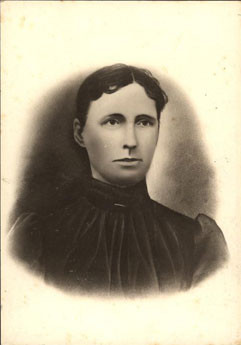


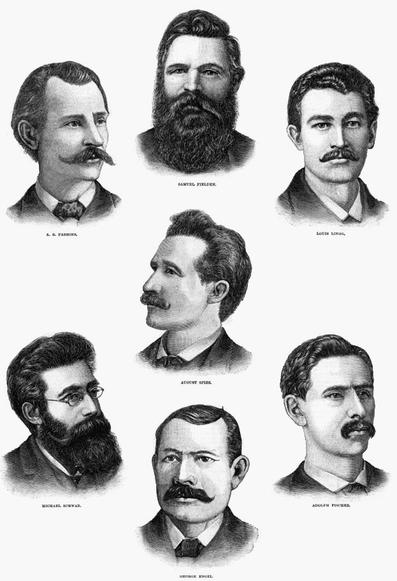

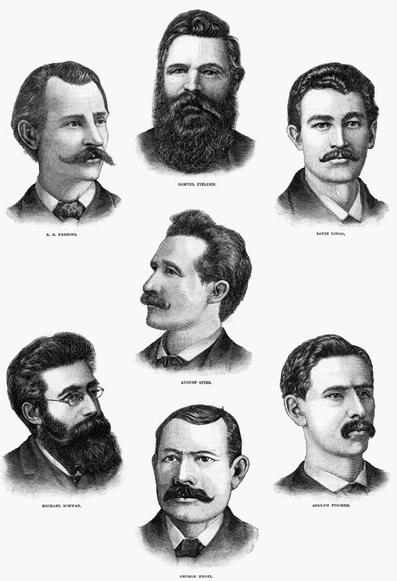
![Workers finish installing Gelert's statue of a Chicago policeman in Haymarket Square, 1889. The statue was destroyed by a bomb in 1969 and a replica now stands at the Chicago Police Headquarters. By A[dolph]. Witteman - Chicago Historical Society (ICHi-14452) http://www.encyclopedia.chicagohistory.org/pages/3774.html, Public Domain, https://commons.wikimedia.org/w/index.php?curid=3424497](https://files.mastodon.social/cache/media_attachments/files/115/327/605/965/123/869/small/7483fe6aa40d2404.jpg)

